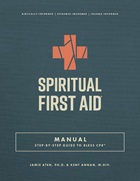Generosity is Not Driven by Income

True or false: in general, bigger donors to churches, ministries, and charities give more because they have more ability to give.
Answer: it’s a trick question. The correct answer, to some extent, is both true and false.
The true part is that people with more money do tend to give away larger amounts of money. Grey Matter Research studied evangelical Protestants in partnership with Infinity Concepts in 2021, in the report The Generosity Factor. Among donors, we found median giving to church and charity in the past 12 months was $2,200 when household incomes were $100,000 or more, dropping to just $200 when incomes were below $30,000. Clearly, higher-income evangelicals give more.
The false part is that when we evaluate giving amounts as a percentage of household income, we see almost no difference in generosity between more affluent and less affluent evangelical donors. (Generosity is simply the proportion of household income that is given away.)
What the Numbers Tell Us
Donors with household incomes below $30,000 give away a median of 1.5% of their pre-tax income. The median is a nearly identical 1.56% when incomes are $30,000 to under $60,000. It does rise slightly to 1.85% with incomes of $60,000 to under $100,000, but then falls again to a median of 1.56% among donors earning six figures.
In other words, evangelicals who give money generally do so at a pretty consistent (and consistently low) rate, no matter what their income is like. But 1.5% of $100,000 is obviously twice as much cash as 1.5% of $50,000, so the amount of money rises as income rises. Grey Matter has measured this among non-evangelical donors as well, and we find essentially the same dynamic.
One difference is that lower-income evangelicals are less likely to be donors at all. Ten percent of the highest-income evangelicals made no financial donations to church or charity in the prior 12 months; this figure rises as income drops, reaching 35% among the lowest-income households.
But aside from whether they give at all, generosity is not driven by income. For simplicity, we’ll divide evangelical donors into larger givers ($1,000 or more annually) and smaller givers (below $1,000). Sixteen percent of bigger givers have household incomes below $40,000, compared to 43% of smaller givers (and 56% of those who give nothing at all). At the same time, 19% of bigger givers are giving away less than 2% of their household income, versus virtually all smaller givers (97%). Clearly the driving factor in generosity is more than just income.
Consider Understanding Evangelical Mid-level Donors, a study Grey Matter conducted with BBS & Associates last year (mid-level donors are those who gave at least $1,500 in a year to one specific charity or ministry outside of their church). These people are already giving larger amounts and higher percentages than the average donor, but the same principle applies: higher-income donors tend to give larger amounts, but they do not give more generously.
Among evangelical mid-level donors, those with household incomes below $100,000 actually give a slightly higher proportion of their income to charities outside of a church (an average of 5.8%, compared to 5% among those earning $100,000 or more). But if we turn things around, we find that those giving a total of $1,500 to $2,499 averaged 1.5% of their income given to charities or ministries. This rises to 3.1% for those giving $2,500 to $4,999, and a whopping 9.1% among those giving $5,000 or more.
Also consider that according to the Federal Reserve, the top 10% in household income have average transaction account balances that are 26 times higher than the bottom 20% in income. So more affluent Americans not only have higher incomes, but more savings, and in general more financial resources and opportunities of varying types. Yet the giving-to-income ratio remains consistent across income levels.
From all of these numbers, the story is clear: people who are more generous are often this way simply because they dedicate more of their resources to giving. What does this mean for you?
What This Means for Leaders
First, if you are raising funds for a donor-supported organization, don’t assume wealthier people are automatically a potential source of substantial gifts. The Grey Matter Research/BBS & Associates study shows the median income of mid-level donors is about $115,000—quite comfortable, but not exactly Warren Buffett. It’s far more important to find people who care deeply about the type of work you’re doing and the kind of people you’re helping. A devoted person of moderate means may be a much stronger long-term prospect than an indifferent person of affluence.
Second, it’s critical to make sure that all gifts and givers are honored. Yes, it is unrealistic to name a building after a donor who gave $30, but that $30 may be the biblical widow’s mite: someone giving out of their want rather than out of their abundance. The small donor deserves to be honored and respected just as much as the large donor does (and many fundraisers tell stories of $100,000 donors who started their relationship with a gift of $30 or so).
From a purely financial perspective, it is completely understandable that low-income evangelicals are far less likely than others to give anything at all. From a biblical perspective, this is less understandable. The Bible does not discuss giving as an action to be taken only when it’s comfortable. If you teach or lead people, it may be time to talk more about giving out of want rather than abundance, even if the way for them to start is one dollar at a time. It may also be time to take more tangible steps to help lower-income households, who often struggle with debt, instability, and lack of financial acumen. Can you help them, or connect them with people who can help, in areas such as debt reduction, job training, or making wise financial decisions?
Finally, if you are blessed with a higher level of income, it may be time to reconsider just how you use your resources. Statistically, you are likely giving away the same proportion of your funds as people with much lower incomes, who are often giving more sacrificially. Regardless of whether you consider tithing to be a biblical mandate or guideline, the chances are you’re not close to it: only about 13% of evangelical Protestants give anything close to a tithe. In fact, the proportion who tithe is actually lower than the proportion who gave nothing at all to church or charity in the last 12 months (19%).
For where your treasure is, there your heart will be also.
Ron Sellers is the grey matter behind Grey Matter Research. He has served over 100 donor-supported organizations in his career, along with many for-profit companies, through consumer insights and market research.
The Better Samaritan is a part of CT's
Blog Forum. Support the work of CT.
Subscribe and get one year free.
The views of the blogger do not necessarily reflect those of Christianity Today.





















